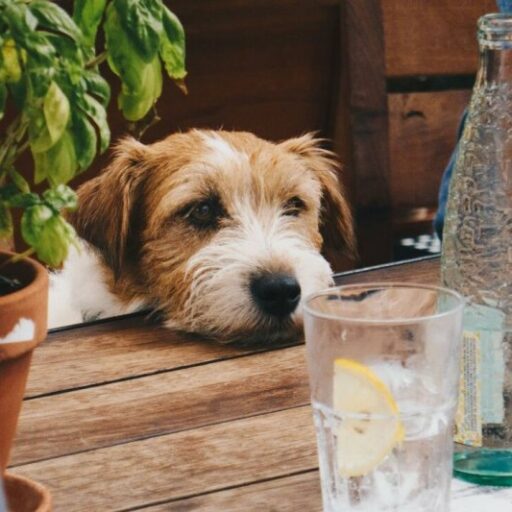Best Dog Friendly Garden Plants – Perfect for decorating the home or giving equally delicious gifts, poinsettias, holly, evergreens and other seasonal plants are as much a part of the holiday season as cookies and socks. However, these and other live plants commonly used during the holidays pose some risk to curious animals, who may choose to nibble on leaves, flowers, or drink stagnant water. While we don’t want to scare you into using live plants to decorate your halls, it’s helpful to know which pet-safe holiday plants are suitable for homes with four-legged friends and which should be avoided.
We asked the plant experts at The Sill for their pet-safe holiday plant recommendations to replace some of the most popular plants during the season. These recommended plants still add the color and charm that only live plants can bring to long, dark winter days, without posing any risk to your pets. Here’s a quick cheat sheet you can share and better understand the whys and wherefores of each plant. Shop The Sill’s entire line of pet-friendly plants and learn more about pet-friendly subscription boxes.
Best Dog Friendly Garden Plants

So why are these “non” plants causing problems for your pets? Here’s a look at the whys and whats of these pet-safe holiday plant swaps, plus some tips for caring for your new pet-perfect plants. (Note: To order pet-safe swaps directly from The Sill, simply click on the name of each plant.)
Gift This, Not That: 5 Pet-safe Holiday Plants
The poinsettia (Euphorbia pulcherrima) has a milky, pungent sap that, if swallowed, can irritate the mouth and stomach, sometimes causing vomiting. While it’s not the most toxic plant to threaten pets, it’s not a good one either! There are other good options.
The bright pink or red flowers bloom around Christmas. Although eating large quantities can cause an upset stomach, it generally does not pose a health risk to curious pets.
This tough epiphyte succulent needs bright light and high humidity to truly thrive. A sunny window away from heat sources will suffice. Do not overwater; check if water is needed by lifting the pot. If it is light, water it.
) Tree and tree needle oils can cause stomach upset in pets if consumed. Grove water is of more concern, as it may contain oils as well as leached chemicals used to grow the plants. Other conifers, including spruce and fir, are at similar risk.
The Grand Hotel
) When grown indoors, it is a slow growing plant, adding no more than 1 foot per year until it reaches about 10 feet tall. We’re not saying this is an individual replacement, but it’s a good option for families with pets who like to get into mischief.
Majesty palms are known for being moody plants. It may take a few tries to find the perfect spot, but this plant generally grows well in a bright location with plenty of light. Provide plenty of water regularly and keep a spray bottle nearby to spray several times a week.
) contains lycorine and other harmful substances that can cause vomiting, diarrhea, loss of appetite and abdominal pain, lethargy and tremors in cats and dogs. The bulbs of this plant are known to be more toxic than the flowers and stems.

Phalaenopsis (Phalaenopsis) has the same delicate flowers, cheerful colors and Victorian charm as amaryllis, but has no side effects if eaten by pets. Plus, they can bloom for months and come in a variety of colors, so there’s probably one that will suit every room in the house.
New Pets-friendly Starbucks In Sg At Gardens By The Bay
Phalaenopsis likes bright, indirect light. East-facing windows face west or south, as long as they are indirect. When the bark or moss is dry to the touch and the pot is light, water the orchid thoroughly (until water drains from the drainage holes in the bottom of the pot).
) have spiny leaves that usually prevent most animals from overeating and causing serious injury. But consuming too many leaves or berries can cause gastrointestinal upset, such as vomiting and diarrhea.
With a lovely two-tone texture, and while we won’t claim it’s a “perfect” alternative to holly, it does have vibrant foliage – above all, that’s what we want on those dark winter days when you just want some peace and quiet. hour.
It’s not the easiest houseplant to grow, but you can do so with a few tips: Provide medium to bright indirect light; Water only when the top 1 to 2 inches of soil is dry; Provide high humidity to maintain foliage. water regularly or place on a pebble tray.
Amazon.com: Dog-friendly Gardening: Creating A Safe Haven For You And Your Dog: 9781845844103: Bush, Karen: 圖書
) is toxic to dogs and cats (the whole plant). Eating just a few leaves can cause vomiting and diarrhea, weakness, difficulty walking, drowsiness, tremors or seizures, and loss of appetite. Long-term effects can be serious.
Peacock plant (Calathea makoyana) has long, wavy green leaves with a pattern of dark green strokes on top and a dark purple pattern below. We love its height, scale and intense color as a bushy azalea, but it is pet-proof and can thrive indoors with a little attention.
Say it once, twice, three times: this plant likes humidity. Like 60% humidity without frizz. Place in a bright place away from heat and on a tray filled with pebbles. Additionally, place a potted plant in the shower and run hot water for a steaming trickle. They will love you for it!
:max_bytes(150000):strip_icc()/fresh-and-green-herbs-in-rustic-garden-940936938-8b291f6c5e5d4b908d27502774f20f1d.jpg?strip=all)
We send your most common questions about great houseplants to Paris Lalicata, community associate and director of plant education at The Sill. Here are his tips to help you grow. Learn more on The Sill blog.
Make Your Garden A Pooch-friendly Paradise
A: The Majesty Palm is an excellent, pet-friendly floor plant that can grow 8 to 10 feet tall in optimal indoor conditions.
A: Examples of pet-friendly plants that can also tolerate low light conditions include bird’s nest ferns, parlor palms, Calathea species, and peperomia.
Answer: Phalaenopsis is an excellent non-toxic flowering plant. Other non-toxic plants, such as pepper or calathea, although sold primarily as foliage plants rather than flowering plants, can still thrive indoors under the right conditions.
A: The holiday cactus (Schlumrgera) is pet-friendly and a great non-toxic choice for holiday decorations. Calatheas are also a great choice because the painted leaves are so beautiful and can add a pop of color to any decor. African violets, bromeliads and roses can also be used in place of poinsettias.
11 Best Dog-friendly California Vacations For Your Pup
A: Plants are only toxic if eaten by pets. If you already have poisonous plants in your home, be sure to keep them out of reach by using wall/ceiling mounts, plant racks, etc. Range for pets.
It is important to remember that not all plants are equally toxic to pets. Phytotoxicity ranges from “may cause abdominal pain” to more serious consequences for animals that eat leaves or flowers, depending on the specific plant. But when it comes to our pets, a little extra caution is never a bad thing! From hedges to borders to protecting your plants, here are our tips for making your garden dog-friendly.
Gardens are wonderful and stimulating spaces for dogs. But dogs can also wreak havoc, digging up plants and peeing on lawns.

There are also dangers in gardens: some plants can be toxic to dogs, and there are other hazards, from harmful chemicals to sharp objects.
Ways To Make Your Yard Pet Friendlier
There are many things you can do to ensure you get along well with your furry friend, including planting non-toxic plants, creating a dedicated dog space and keeping your garden safe.
Creating different routes around the yard, such as clearly defined paths and designated areas for playing or digging, will keep your dog excited. Different textures on the surface stimulate the feet and plants such as willows and ornamental grasses dance, sway and entertain.
Noisy dogs can damage young plants or those with weak stems, either by digging them up or crushing them. Plant large, mature perennials and choose hardy plants like nepeta, astilbe and hardy geraniums (avoid
Species, can be toxic to dogs and, confusingly, its common name is geranium). Use a good sturdy shrub trunk, such as a viburnum or shrub rose.
The Perfect Dog Friendly Palm Springs Getaway!
Many garden plants can be toxic to dogs. They include chrysanthemums, monks, buttercups, daffodils, daphne, delphiniums, foxgloves, hydrangeas, oaks, tomatoes, wisteria and yew. If you notice any worrying symptoms and think your dog has ingested any part of the plant, take your pet to the veterinarian. Watch our video on toxic plants for dogs.
Dogs can destroy lawns and borders, so use sand or bark to create a designated play or digging area. To prevent dogs from crossing your borders, you can create paths through them or create clearly defined borders, such as low box hedges. High beds are also a good choice.
If you could still have a beautiful garden


